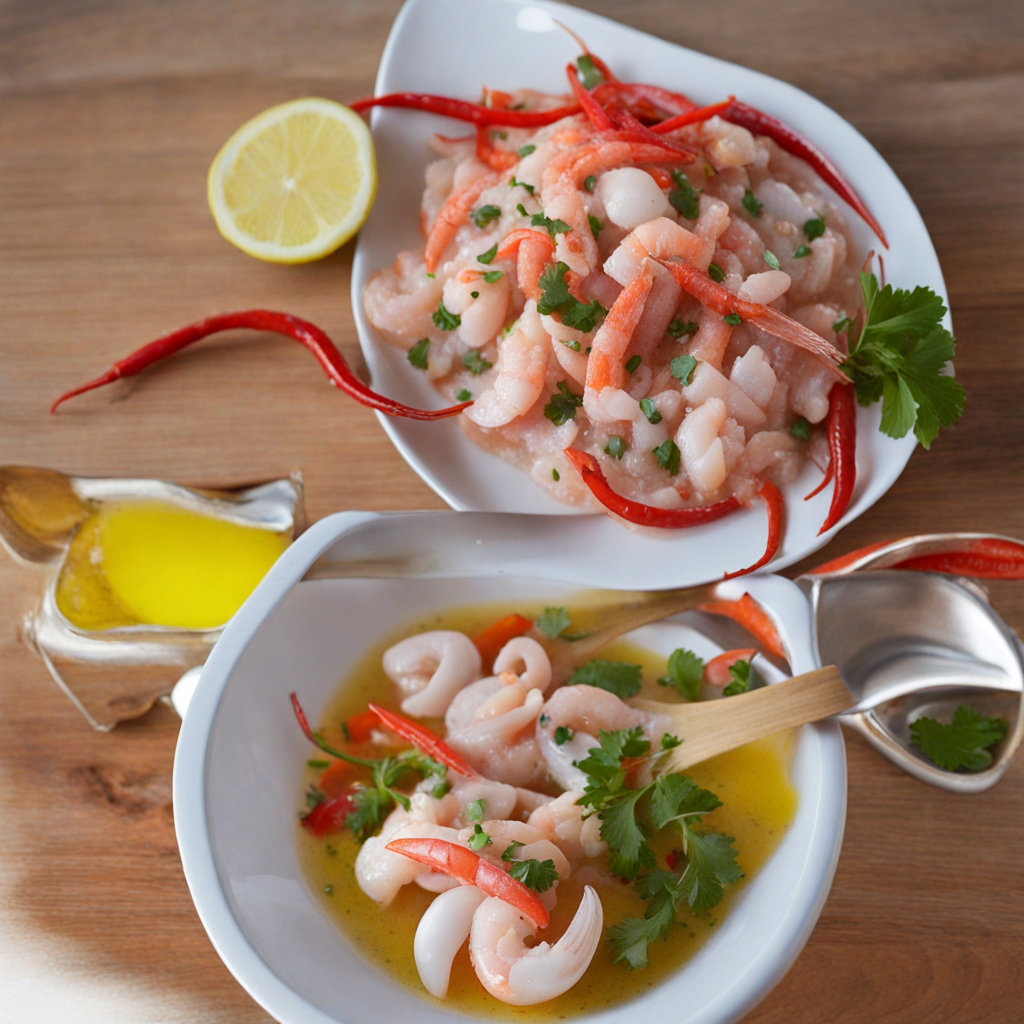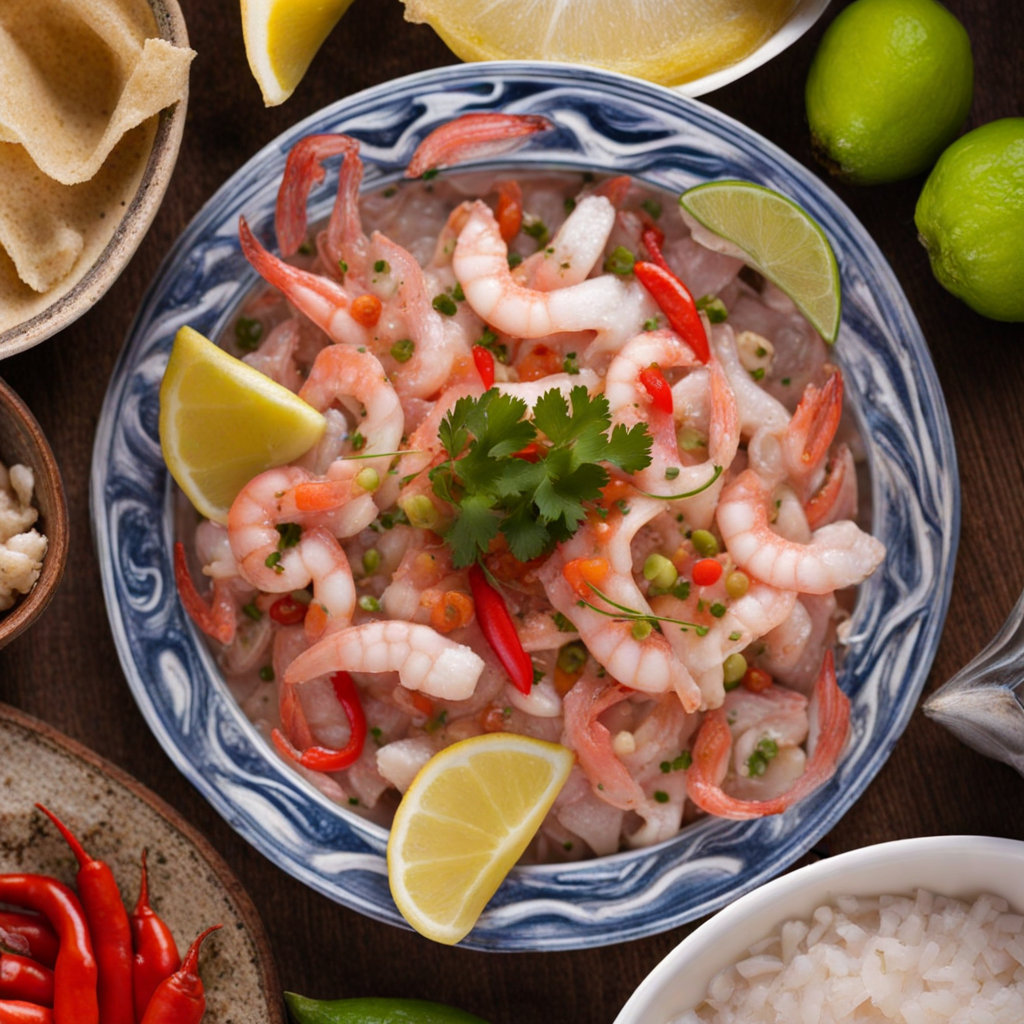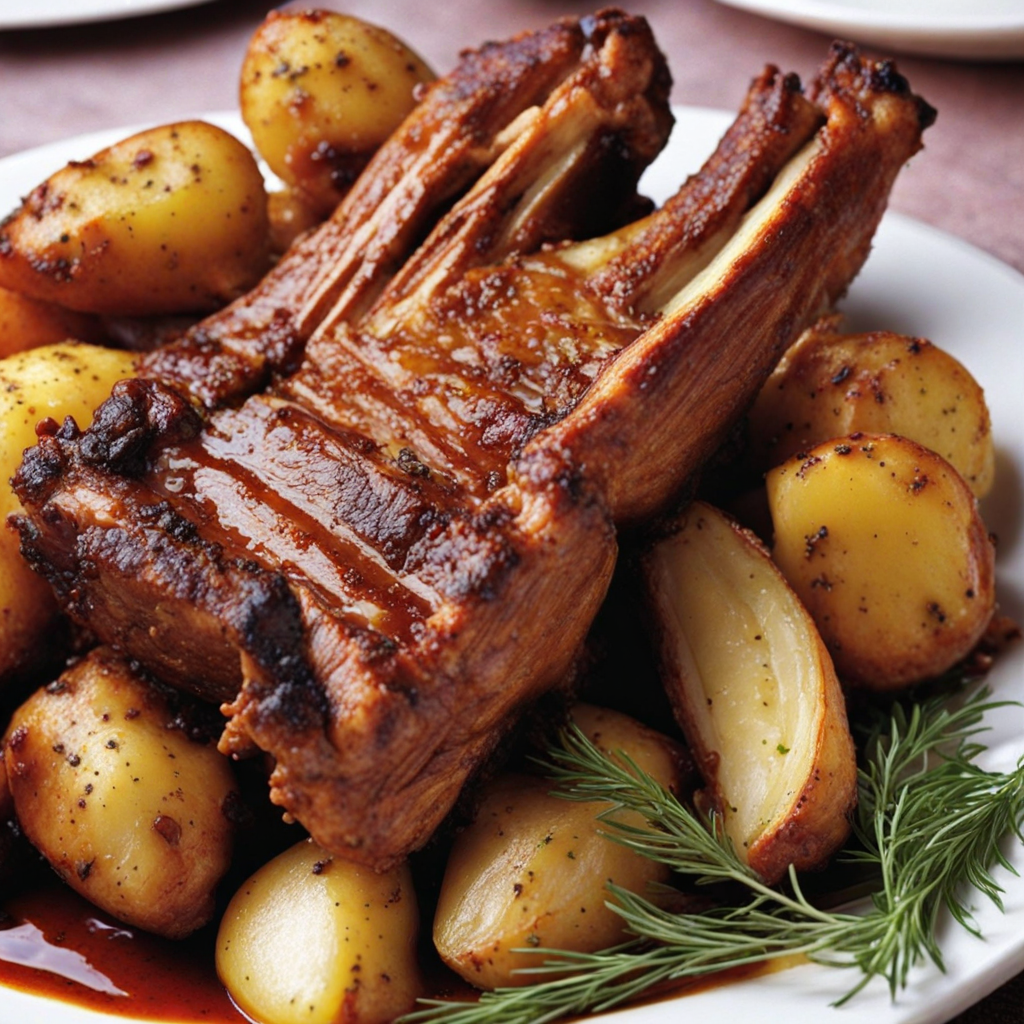Mariscal
Mariscal is a vibrant and refreshing seafood dish hailing from the coastal regions of Chile, celebrated for its bright flavors and robust ingredients. At its core, Mariscal features a medley of fresh, raw seafood, typically including shrimp, clams, and octopus, all marinated in a zesty blend of lime juice. This tangy marinade not only enhances the freshness of the seafood but also serves to tenderize it, resulting in a delightful combination of textures that dance on the palate. Each bite offers a burst of oceanic essence, encapsulating the spirit of the Chilean coastline. The preparation of Mariscal often involves the addition of finely chopped onions, cilantro, and a hint of chili pepper, lending the dish an aromatic quality and a subtle heat that complements the natural sweetness of the seafood. The vibrant colors of the ingredients make the dish visually appealing, evoking the lively atmosphere of Chilean coastal markets. Served chilled, Mariscal is commonly enjoyed as an appetizer or a light main course, making it a perfect choice for warm weather dining or social gatherings. Accompanying the dish, you'll often find sides such as crispy corn chips or toasted bread, which provide a satisfying crunch and balance the dish's tender seafood. A dash of extra lime juice can elevate the flavors even further, making each taste a refreshing experience. Whether you're a seafood lover or simply looking to explore new culinary delights, Mariscal offers a tantalizing glimpse into Chilean gastronomy, showcasing the country's rich maritime bounty.
How It Became This Dish
The Enigmatic History of Mariscal: Chile’s Seafood Delight Origins and Early Influences Mariscal, a vibrant and refreshing seafood dish hailing from the coastal regions of Chile, reflects the country’s rich maritime heritage and the diverse culinary influences that have shaped its gastronomy. The word "mariscal" comes from the Spanish term for "marshal," but in the culinary context, it refers to a dish that commands attention with its bold flavors and fresh ingredients. The origins of Mariscal can be traced back to the indigenous peoples of Chile, particularly the Mapuche and the Chono tribes, who have been fishing the Pacific waters for centuries. Their diets were rich in seafood, relying heavily on the bounty of the ocean. These early inhabitants utilized various methods to prepare fish and shellfish, often serving them raw or lightly cured, akin to what Mariscal represents today. As Chile became a Spanish colony in the 16th century, the culinary landscape began to evolve. Spanish colonizers introduced new ingredients and cooking techniques, which fused with the indigenous practices. The introduction of citrus fruits, particularly lime and lemon, would later become integral to the preparation of Mariscal, enhancing its profile with acidity and brightness. Cultural Significance Mariscal is more than just a dish; it embodies the coastal identity of Chile. The Pacific Ocean has long been a source of sustenance and livelihood for Chileans, influencing not only their diet but also their cultural practices and social gatherings. In coastal towns like Valparaíso and Pichilemu, Mariscal is often served in local markets and restaurants, becoming a staple for both residents and visitors. The dish is typically prepared with a variety of seafood, including clams, mussels, shrimp, and fish, often marinated in lime juice, which causes the proteins to "cook" in the acidity. The addition of finely chopped onions, cilantro, and occasionally chili peppers adds a fresh and zesty touch. The communal aspect of enjoying Mariscal is significant; it is often shared among friends and family, embodying the spirit of togetherness that is central to Chilean culture. Development Over Time As Chilean society evolved through the 19th and 20th centuries, so did the preparation and presentation of Mariscal. The rise of tourism along the Chilean coast during the late 19th century brought increased attention to local culinary traditions. Restaurants began to showcase Mariscal as a signature dish, appealing to both locals and tourists alike. The post-World War II era saw a further transformation in the culinary scene of Chile. Modern refrigeration and improved transportation allowed for fresher seafood to be available year-round, leading to an increase in the popularity of seafood dishes like Mariscal. Culinary schools began to emerge, and chefs started to experiment with traditional recipes, incorporating new techniques and presentation styles. By the late 20th century, Mariscal had firmly established itself as a staple in Chile’s culinary repertoire. The dish became a symbol of Chilean identity, celebrated in festivals and food fairs that highlighted regional seafood. In coastal cities, Mariscal is not only a favorite among locals but also a must-try for tourists eager to experience authentic Chilean flavors. Contemporary Interpretations In recent years, there has been a resurgence of interest in traditional and regional cuisines across the globe, and Chile is no exception. Chefs are increasingly drawing on the rich history of dishes like Mariscal, paying homage to its origins while adding contemporary twists. Modern interpretations often embrace sustainability, emphasizing the importance of sourcing seafood responsibly. Diners are now more aware of the environmental impact of their food choices, prompting chefs to adopt practices that respect marine ecosystems. As a result, Mariscal is often made with locally sourced, seasonal seafood, promoting a farm-to-table ethos that resonates with today’s diners. Furthermore, fusion cuisine has led to innovative variations of Mariscal, incorporating influences from other culinary traditions. For example, some chefs have begun to experiment with Asian flavors, integrating elements like soy sauce or sesame oil, creating a unique blend of Chilean and Asian cuisines. Such adaptations reflect the dynamic nature of food culture, where traditional dishes are continually evolving to meet the tastes and preferences of contemporary eaters. Conclusion: A Culinary Legacy Mariscal stands as a testament to the rich tapestry of Chilean culinary history, woven from indigenous practices, Spanish influences, and modern interpretations. Its evolution over time mirrors the broader changes in Chilean society, from the early fishing traditions of indigenous peoples to the contemporary emphasis on sustainability and innovation in the culinary arts. As Chileans continue to celebrate their coastal heritage through dishes like Mariscal, the flavors and traditions of this seafood delight remain a vital part of the nation’s identity. Whether enjoyed in a bustling market, a seaside restaurant, or a home kitchen, Mariscal encapsulates the essence of Chile’s relationship with the sea—a relationship that has nourished both the body and the spirit for generations. In every bite of Mariscal, one can taste the history, culture, and community that define Chilean cuisine, ensuring that this dish will continue to be cherished by future generations.
You may like
Discover local flavors from Chile







